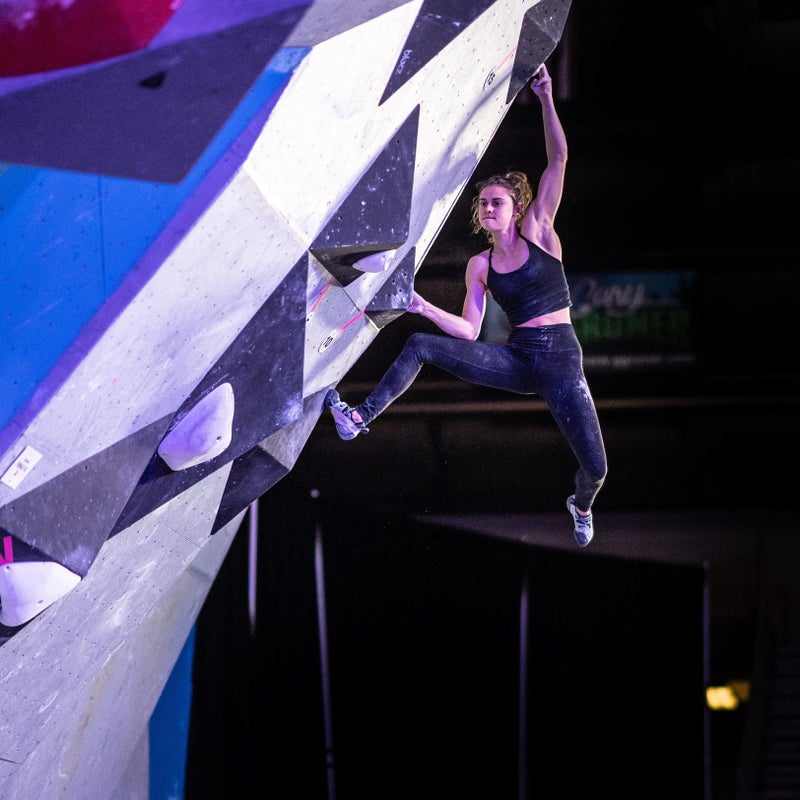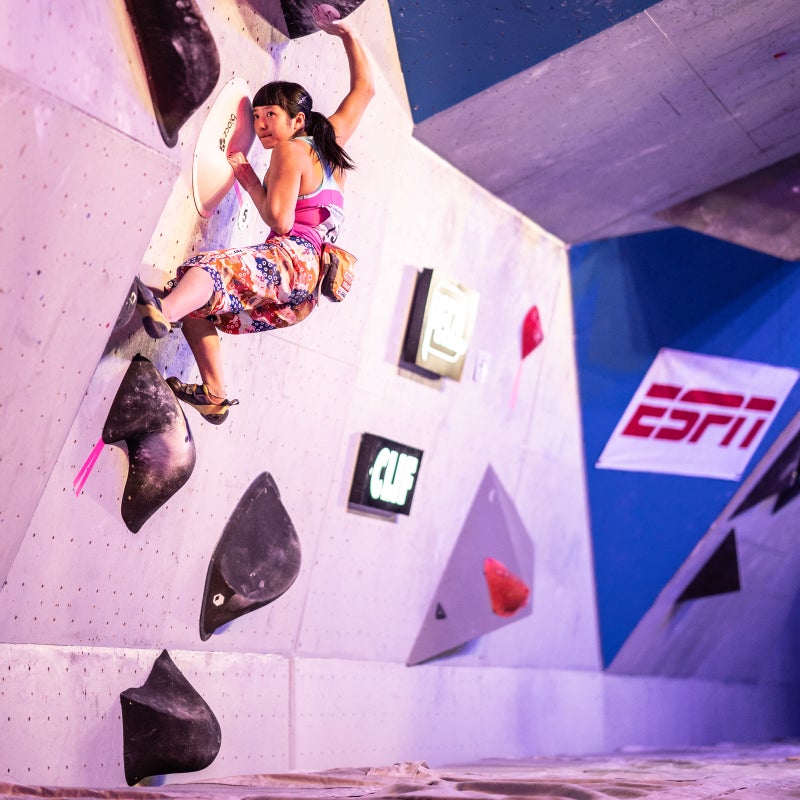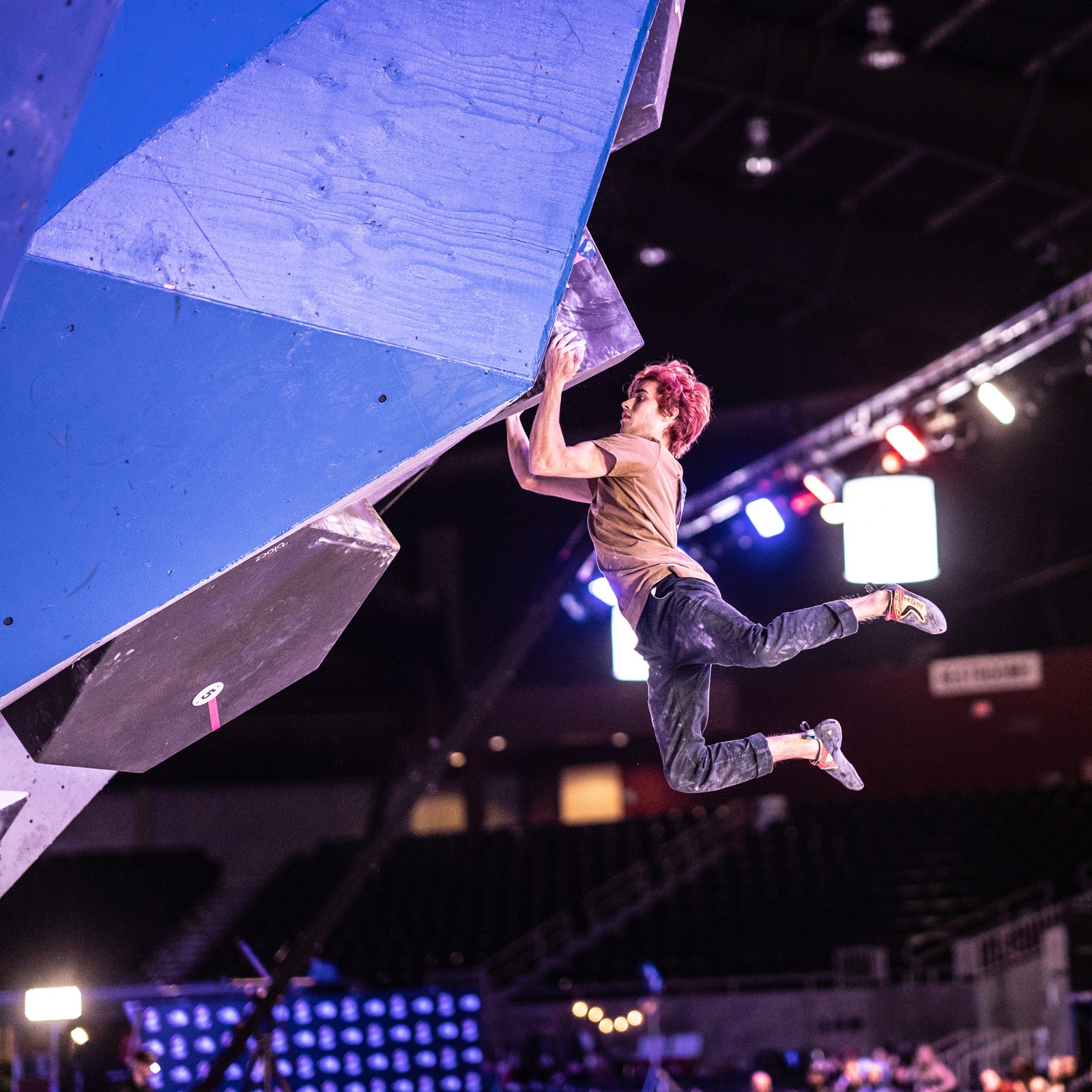On a hazy night in 1987, two renegade climbers in Berkeley, California, quietly set anchors underneath an on-ramp to Highway 13. They rappelled down incrementally, gluing╠řstone knobs they had collected from an excursion in Yosemite to the concrete pillars rising╠řup at stark vertical angles.╠ř
Through several nights of undetected effort, the climbers, Jim Thornburg and Scott Frye, embellished the highwayÔÇÖs partitions with bulges, depressions, indentations, and protruding chipsÔÇöan urban simulation of mountainside cliffs. With their ingenuity, East Bay guerilla attitude, and some very strong adhesive, Thornburg and Frye transformed these highway pillars╠řinto the first artificial╠řclimbing wall in the United States.
So begins , John BurgmanÔÇÖs new chronicle of a sport that became some peopleÔÇÖs╠řobsession. is a former╠řClimbing magazine editor,╠řand the bookÔÇÖs slightly intimidating 400 pages recount╠řhow╠řclimbing has evolved from a passion of dirtbags to an╠řOlympic sport in just a few decades.╠ř

Burgman╠řsays he╠řwas inspired to write a history of competition╠řclimbing after he searched for one╠řin 2014╠řand only found bullet points on USA ClimbingÔÇÖs Wikipedia page. He spent five years researching and reporting High Drama.╠ř
The indoor climbing industry now boasts and ╠řin the United StatesÔÇöa shocking ascent for a once niche sport. BurgmanÔÇÖs book╠řcomes at the right time: as fans anticipate climbingÔÇÖs Olympic debut in Tokyo next year,╠řthere is excitement as well as a need to reexamine climbingÔÇÖs evolution. After all, the sportÔÇÖs grassroots origins might seem to clash with rapid commercial growth and arenas like the Olympics.
ItÔÇÖs clear where Burgman╠řstands: heÔÇÖs an advocate for the sportÔÇÖs mainstream acceptance as well as a historian and a believer in presenting climbing as a╠řsignificant athletic progression╠řand not merely a trend╠řborne of rebellious╠řpassion.
ÔÇťI write about competition climbing the same way I would write about pro basketball or pro baseball,ÔÇŁ he says.╠řHe builds his case not through arguments╠řbut by rich╠řdescriptions╠řof noteworthy athletic feats. Some,╠řlike Ashima ShiraishiÔÇÖs╠řeffort to spring for an overhanging handhold during the 2018 Bouldering Nationals,╠řare displays of BurgmanÔÇÖs able sportswriting:╠řÔÇťShe tried doggedly to lunge for one of the handholds above the lip … she hung in a horizontal position to recompose herself,ÔÇŁ he writes.╠řÔÇťIf she grasped it, she╠řwould be on her way to her first national championship.ÔÇŁ

Burgman clearly wants readers to understand the dedication and effort that many╠řhave poured into climbing since its start.╠řÔÇťThere has╠řto be a lot of blood, sweat, and tears from different people through a lot of years to bring the sport to the prominence of the Olympics,ÔÇŁ he says.╠ř
What will happen to climbing after the sport makes its debut next summer╠řat the╠řOlympics? Will millions more people hang out at climbing gyms around the world on weekday nights (once thatÔÇÖs allowed again)? Will╠řsponsorships become the new normal for professional competitors?╠řWe donÔÇÖt know those answers yet. But thereÔÇÖs no better time to pick up BurgmanÔÇÖs╠řhistory of climbing and its plucky╠řathletes. As gyms stay closed during the pandemic, his book╠řis the next best way to stay immersed in the popular pastime.


